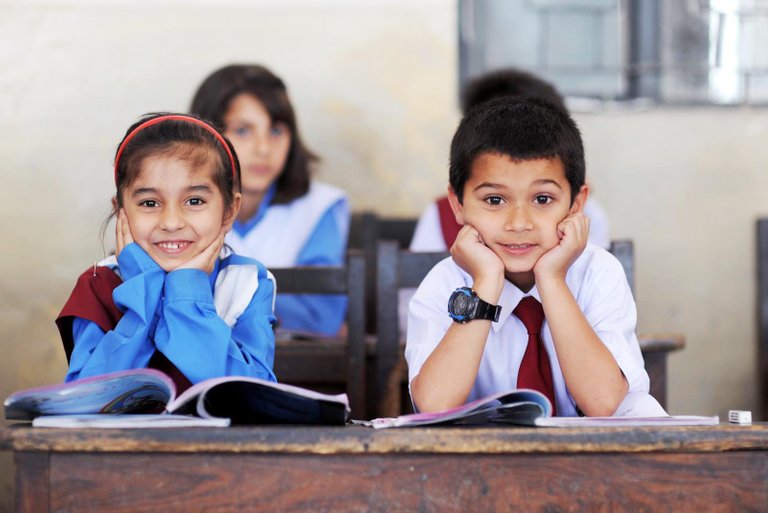
Parents should need to know
Individual education plans (IEPs) have become a crucial part of the education system. And the number of students on IEPs is growing across Ontario public schools.
IEPs are created for students who are defined as exceptional, in order to consider their individual needs (whether behavioural, communicative, physical, intellectual) and support their optimal learning potential.
Parents who have busy schedules may not feel as though they can make a valuable contribution to their child’s education and discussions about an IEP. Or they may lack the awareness of their parental rights when it comes to participating in the IEP process. This means they may be wrongly left out of the conversation.

What are IEPs?
Individual education plans are used to identify and plan annual goals for students who may require extra supports or individualized learning. If done incorrectly, IEPs can create hostility between experts and parents where certain students become misrepresented, segregated and stigmatized in the classroom.
Inaccurate IEPs often set low expectations and misrepresent a child’s needs and abilities. Imagine this scenario: A child shows difficulty reading out loud in class and is offered one-on-one reading support. Upon discussion with the child and parents, it becomes apparent that the child reads well at home out loud and only “freezes” when asked to read out loud in front of classroom peers because of extreme nervousness.
In this case, an inaccurate IEP may reflect a need for reading support when in reality the child may require supports for anxiety. Accurate IEPs are important to ensure a child’s appropriate needs are met.
As a classroom teacher and doctoral student researcher, I believe parents can support their children if empowered to understand how IEPs are key to meaningful learning.
Here are four questions parents can ask to ensure that the IEP accurately represents their child’s learning needs.

- How is my child being perceived?
As mentioned above, not all IEPs are written to support children who have been assessed as having a disability — but many are.
The medical model assumes that disability is an abnormality that requires “fixing,” whereas the social model positions disability as a difference in people. The social model shifts from fixing the child to fixing the conditions of the learning environment. The medical model assumes a deficit view of the child’s ability where the social model emphasizes supports a child needs to learn.
Classroom adaptations of material and learning expectations (like access to material at their modified learning grade level), assessments (like access to accommodations for using speech-to-text software during tests) and the overall classroom environment (like flexible seating and quiet spaces) permit your child to address their needs and individual learning goals, enhancing their performance and success. - How does the IEP attend to my child’s needs?
Children have a variety of needs that are unique and require distinctive attention. Some of these needs might include but are not limited to: anxiety, behavioural, communication, academic and social needs. The needs of your child must be reflected in the IEP to ensure that the classroom is adapted to support their day-to-day needs, wants and interests.
For instance, if your child needs help moving from one class or space to another, their IEP should recognize this and address how their transitions will be supported both verbally and visually. Such supports might include things like a printed or posted schedule, adults redirecting your child to appropriate tasks or spaces and modelling how to transition between tasks and spaces with pictures and videos throughout the day.

- What do the words in the IEP mean?
Education-specific jargon is used to construct IEPs: words like “accommodations,” “modifications,” “differentiated instruction.” Parents should be encouraged to ask questions about IEPs and what they mean. Understanding the terms will help ensure your child’s learning and growth are accurately supported. - What is this going to look like in the classroom for my child?
The way an IEP is written may differ greatly from how it is actually enacted. This is why it is important for parents to work in collaboration with education professionals when creating an IEP over time.
Parents should ask how the resources and tools outlined in the IEP are going to be used or applied in the classroom, and should ask teachers for examples of how educators will engage the supports with the child.
The takeaway
When parents or caregivers participate in the process of drafting an IEP, it can limit the misrepresentation of their child’s needs. Misrepresentation can impact a child’s attitude towards learning, identity as a learner and learning outcomes.
IEPs are working documents. They are meant to be flexible and adaptable so if the strategies proposed do not work, they can change. Parents, experts and teachers need to create spaces for open dialogue, without judgement, to support children’s learning.
IEP is a chilling thought - since when is it no longer the parent's decision if a child needs an "individual education plan". This takes all the power out of the hands of the parents and gives it to a third party "professional" who may or may not have the child's best interests in mind. Certainly not the parent's best interests!
That was interesting. The education system needs to take care of the brightest kind in a special way. Thanks for sharing.
Congratulations @meheryab! You have completed the following achievement on the Hive blockchain and have been rewarded with new badge(s):
Your next target is to reach 50 replies.
You can view your badges on your board and compare yourself to others in the Ranking
If you no longer want to receive notifications, reply to this comment with the word
STOPCheck out the last post from @hivebuzz:
Support the HiveBuzz project. Vote for our proposal!
with my experience with IEP's here in the states, it is used to dumb down the curriculum and not help the student thrive. Although I know it is suppose to be the opposite.
There are so many children failing these days not only because of childrens needs but because the school systems have changed so much over the years. I feel as though all children's education should be tailored to their specific needs.
IEP's a a growing thing and partially because they put such hugh expectations on children at a younger age and half of them can't keep up.
I had a child with an IEP since he was in the 2nd grade. By the time he was in the 10th grade I moved to a state that was learning at a slower pace and they felt he no longer needed an IEP. Although I saw him still struggling to keep on task it still caused him to lose interest in school cause he was no longer getting the extra help he needed. I ended up spending his last years in school fighting for his rights to no avail.
I think that schools are starting to realize that these children need help so they can be successful in life.
Source of potential plagiarism
Plagiarism is the copying & pasting of others' work without giving credit to the original author or artist. Plagiarized posts are considered fraud.
Guide: Why and How People Abuse and Plagiarise
Fraud is discouraged by the community and may result in the account being Blacklisted.
If you believe this comment is in error, please contact us in #appeals in Discord.